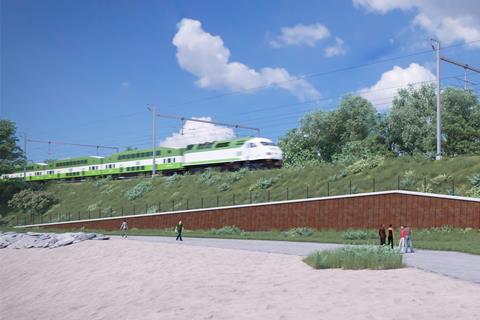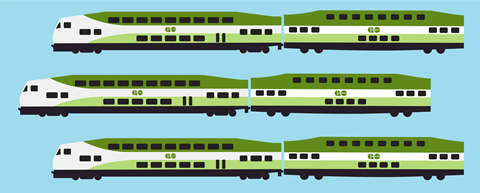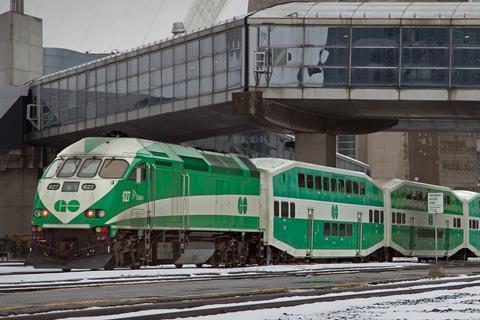
CANADA: Infrastructure Ontario and the ONxpress Transportation Partners consortium have signed the On-Corridor Works agreement, covering the largest and most complex elements of the GO Expansion programme to replace infrequent diesel-powered commuter services in the Greater Toronto & Hamilton Area with an all-day two-way network of frequent electric trains comparable to cities such as London, Tokyo, Paris and Sydney.
The signing on April 19 starts a two-year project development phase, with the final scope, costs and timescales to be confirmed in 2024.
ONxpress Transportation Partners consortium
- Applicant lead: Aecon Concessions, Alstom Holdings, FCC Construccion, Deutsche Bahn International Operations;
- Systems & integration: Alstom Transport Canada;
- Construction, design & engineering: Aecon Infrastructure Management, Alstom Transport Canada Inc., FCC Construcción, WSP Canada, Hatch Corp;
- Fixed infrastructure maintenance: Deutsche Bahn International Operations, Aecon O&M;
- Operator team: Deutsche Bahn International Operations, Aecon O&M.
Under the agreement, Alstom is to supply electric locomotives, control systems, power supplies and overhead electrification, telecoms and its first North American deployment of ERTMS. It will also modernise GO Transit’s existing BiLevel coaches, and maintain the new locomotives and signalling for 25 years.
Contract scope

The On-Corridor Works package is a ‘single, innovative, fully-integrated contract’ to provide an all-day two-way train service running at least every 15 min on the core network between Union station and Burlington on the Lakeshore West Line, Union and Bramalea on the Kitchener Line, Union and Bradford on the Barrie Line, Union and Unionville on the Stouffville Line and Union and Oshawa on Lakeshore East.
The design, build, operate and maintain agreement covers the infrastructure, electric trains and 25 years of operations, crewing and timetable planning, as well as train control for all operators across the GO-owned network.
The programme will include 205 km of new track, 687 km of electrification, enhancements to platforms and tracks at Union station, building maintenance and storage facilities, installing train control and signalling systems to support more frequent services. level crossings upgrades, grade separation, drainage systems and significant earthworks.
The assets will remain publicly owned by the province of Ontario and managed by transport authority Metrolinx.

Infrastructure Ontario has adopted a ‘progressive design-build-operate-maintain model’, with collaboration between the project owner and contracting partner to refine designs, optimise schedules, reduce risk and finalise pricing before construction.
It said the model reflects the complexity of the project, with multiple stakeholders and external interfaces.
The request for proposals process began in May 2019, with bids evaluated on design and construction methodology, approaches to operations, maintenance and project management, the collaborative behaviours of key individuals in the teams and indicative pricing.
ONxpress was named first-ranked ‘negotiations proponent’ in March. The second-ranked negotiations proponent was EnTransit, which included Keolis, SNC-Lavalin, SNCF, Hitachi Rail, Engie, Eiffage and TSO.
The project will now get underway with a two-year development phase during which Metrolinx and ONxpress will finalise the project scope, risk allocation and pricing, so that the final contract value and project timescales can be confirmed in 2024.
Some early works will commence during the development phase, including signalling upgrading, with operations and maintenance activities to commence after this phase.
Staff
Alstom said the project is expected to generate significant local employment opportunities during the design and construction phases, and it would be recruiting hundreds of employees. This will include filling more than 300 professional and engineering positions during the first year.

















